Maintaining a garden means eating organic fruits and vegetables whenever you want. However, due to less space, we can’t have a garden. Everyone, irrespective of space restrictions, might have a garden if they learn how to build the most of what they have. You can easily make your tiny vegetable garden with a small patio or balcony. It would help if you had some pots to plant your crops and make small-space gardening a reality. Let’s check out how to grow vegetables in small spaces.
Vegetables and fruits are receiving great appreciation in the gardening world and have acquired a prominent position on the table. Due to the growing interest from home gardeners, there has been an increase in the planting of organic fertilizers and the growth of new hybrid varieties, including vivid exotic vegetables and various kinds from throughout the earth. Individuals can grow vegetables in a tiny sunny place in their garden, on a back deck, or a house balcony. There are four things to remember when growing vegetables in a limited space.
- Grow something you prefer to eat — there’s no use in producing spinach if you can’t tolerate the smell.
- Choose vegetable kinds that are more costly at the store – onions and early potatoes may all cost a few dollars to your monthly budget, implying that you’ll never purchase them or that they are only used as a special treat.
- Choose leafy vegetables that you can chop some leaves off, and they will keep on growing, peas or beans that will continue to produce the more you pluck those, cloves that will split up into smaller pieces, or little vegetables that don’t take up a lot of space.
- Grow something unique. Most shops only stock the most popular vegetables, so chards and beautiful spinach like Bordeaux are rarely seen. This is your chance to cultivate something you want to eat instead of being told what to consume by the Buyers.
How to Grow Vegetables in Small Spaces
Selecting Suitable Vegetables to Grow
Here’s a list of some vegetables that have thrived in gardens of various kinds and sizes that I’ve worked with, in no particular order. I don’t recommend growing them all at once; instead, mix and match to determine what works best for you.
Early Potatoes
if you’re interested in growing potatoes, early types develop quicker than their important crop counterparts and are generally more expensive in stores. If everything goes well, you can harvest those before the blight strikes. Earlies do nicely in containers as well. Plant in late March for a crop in 12 to 12 weeks.
Pole Beans
Since many beans may effectively take up your garden, keeping them apart from the rest of your plants is important. Pole beans are quite a fantastic choice for tiny gardens since vertical plants require the lowest amount of room. Trionfo Violetto pole beans serve two purposes: they’re delicious in salads and side meals and attractive in the yard.
Lettuce
cut-and-come-again salad leaves or soft lettuce – there are several types where the leaves are removed as needed rather than the entire plant being harvested. We had a lot of salad dinners with only six plants! Grow between March and September and harvest between May and November.
In case you missed it: Sustainable Agriculture Practices: Eco-Friendly, Healthy Farming Benefits and Ideas
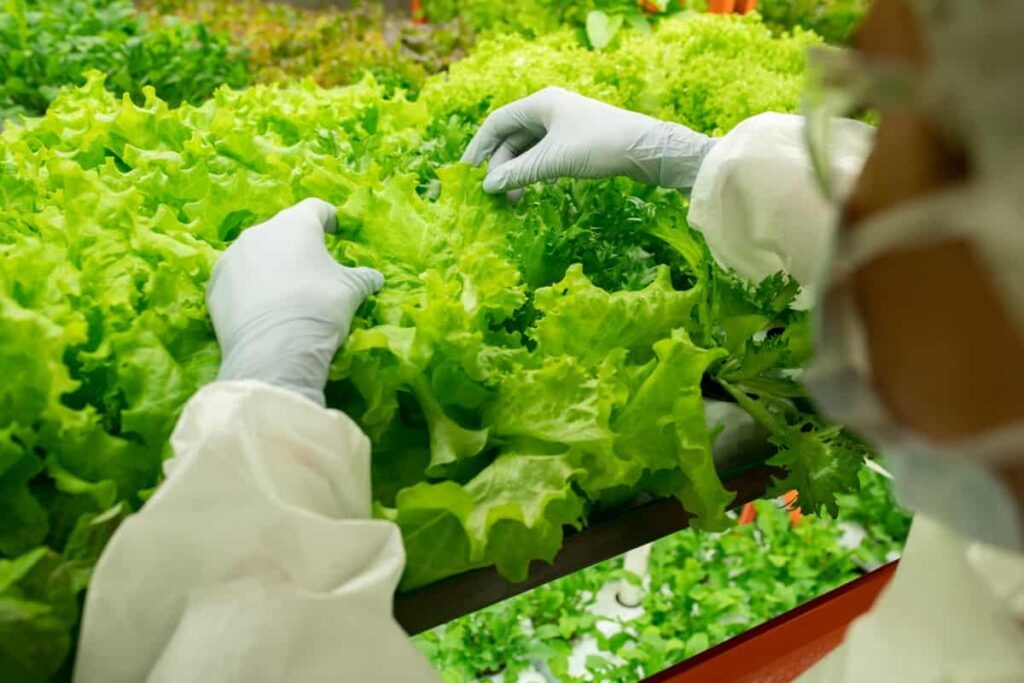
Lemons
Consider planting fruit trees in your garden if you reside in a warm area. If you have lots of light, lemon trees can be kept in your home. Meyers lemon trees are little trees that flourish inside. Keep your soil wet and your plants in direct sunshine for eight hours daily.
Porch-pick
This bushy bean type is great for growing in small places since it is compact and tidy. Fresh off the vine, these beans are delicious, crisp, and soft. Porch Pick grows well in full light and takes 55 days to mature.
Chili Peppers
Chili peppers are ideal for spicing up modest rooms. They require a bright and warm environment to flourish and are both prolific and attractive. They will gladly grow as long you supply that.
In case you missed it: Guntur Red Chilli Farming Project Report: Production Cost, Market Analysis, and Cultivation Practices
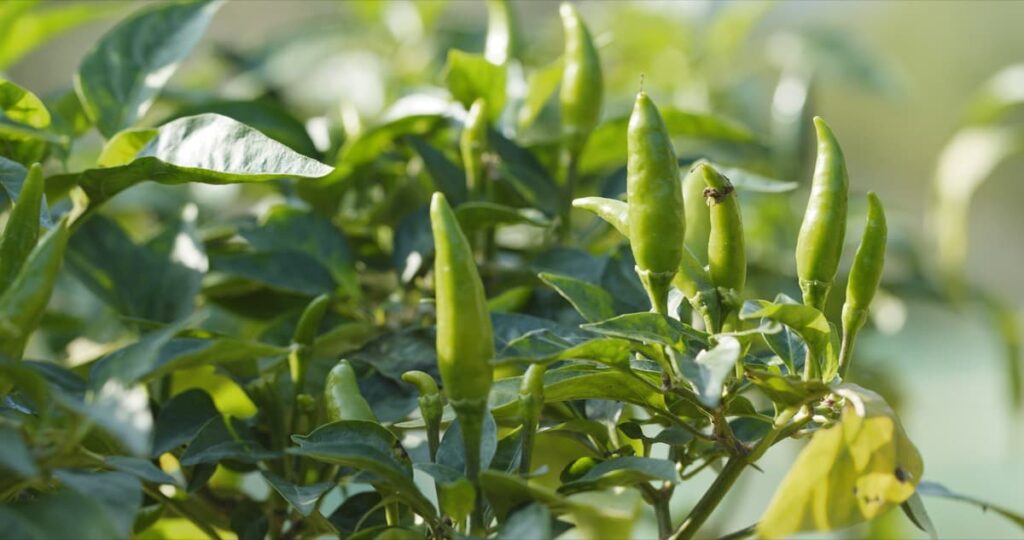
Chard and Spinach
These are two more great cut-and-come green crops that will last for months. We can use leaves and stems. Sow from March to July and harvest throughout the year.
Herbs
People cannot live only on herbs. Despite this, they are delicious in salads, eggs, and casseroles. Herbs are among the most simple garden plants, and they may be grown indoors during the wintertime or outside from summer through autumn. The best approach to choosing herbs for the garden is to go with your likes and preferences. Basil is a hardy plant that grows quickly. Chives, Parsley, and Cilantro, are other excellent choices for tiny areas.
In case you missed it: Sikkim Organic Farming: For Vegetables, Herbs, Fruits, Millets, Crops, Livestock, and Aquaculture
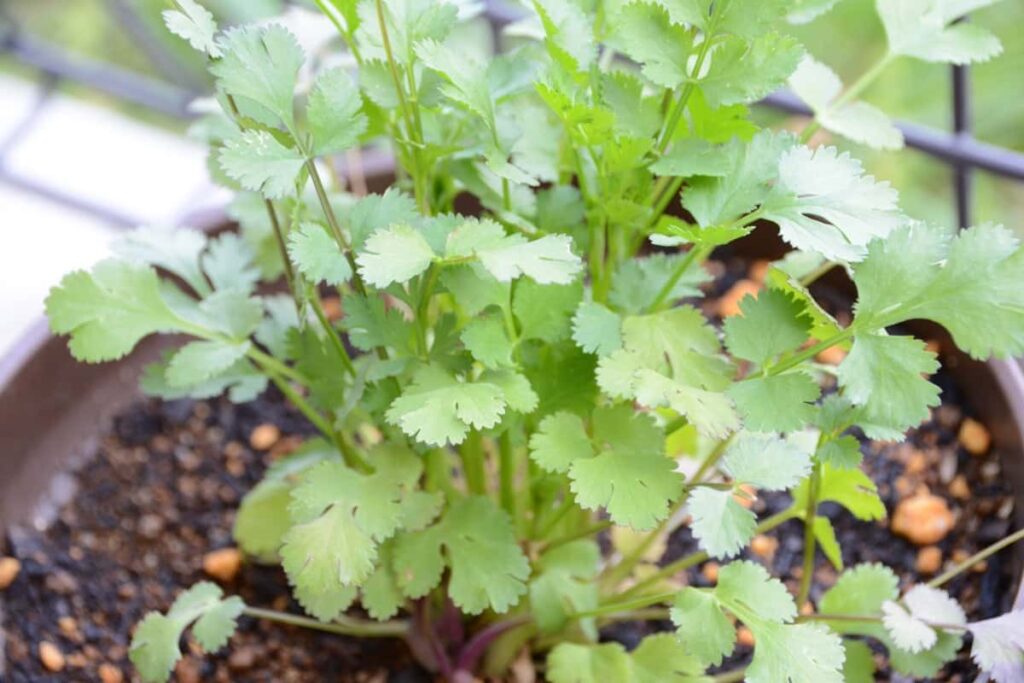
Basil
Basil is also one of the simplest herbs to cultivate from seed, making it ideal for a tiny vegetable garden and any novice gardener. Although you may grow almost any variety of basil, if you want to save even more space in your planters/containers, we recommend smaller varieties.
Ideas to Grow Vegetables in Small Spaces
The location
Your tiny vegetable garden must be placed in an optimal position. Though vegetables are adaptable to their surroundings, you must find a location where they will receive sufficient sunlight.
Water/Irrigation
If you want to grow crops, you must water them regularly. If you don’t have much rain throughout the summer, giving your crops the required water is even more crucial. Consider installing a rain irrigation system if you have the resources. It is more productive and less vulnerable to lose since it waters the roots directly. Ensure you have a decent drainage system, So your plants don’t get too wet.
In case you missed it: How to Grow Watermelon Faster: Best Tips to increase Flowering, Fruiting, and Production Yield
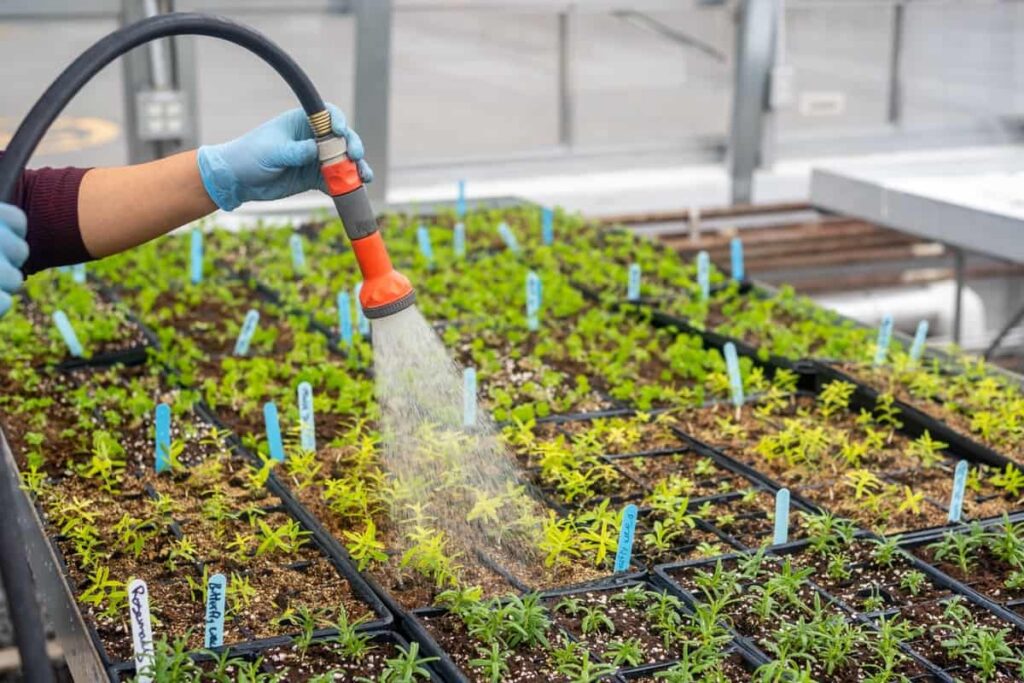
Soil Protection
The soil is the most important input for a successful garden. You must ensure that the soil is sufficiently rich to support the growth of your veggies. So, for the much-needed nutrients, utilize potting mix or make a little composition.
Plant Spacing
Spacing puts the crop in danger as the vegetables grow weaker and more susceptible to parasites and bacteria. Vegetable vases come in various shapes and sizes to fit your tiny garden ideas.
Gardening Methods to Grow Vegetables in Small Spaces
Rooftop Gardening
With monsoon knocking on the door, it appears to be very attractive to stay at home and utilize the rooftop for a vegetable garden in containers in your house. Almost every vegetable may be grown in a container. Large and deep pots are preferable over thin low-quality plastic pots, which heat rapidly and drain poorly.
Vertical Gardening
A vertical garden is a vertically mounted panel producing organically grown plants. These one-of-a-kind structures can be freestanding or connected to a wall and known by various names, including living greenery, plant walls, and moss walls. These vertical plant structures, whatever you want to name them, these plant structures can be as little as a photo frame or as large as an entire wall.
In case you missed it: How to Start Microgreens Vertical Farming: For Indoors, Greenhouse, Growing Tips, Cost, and Benefits
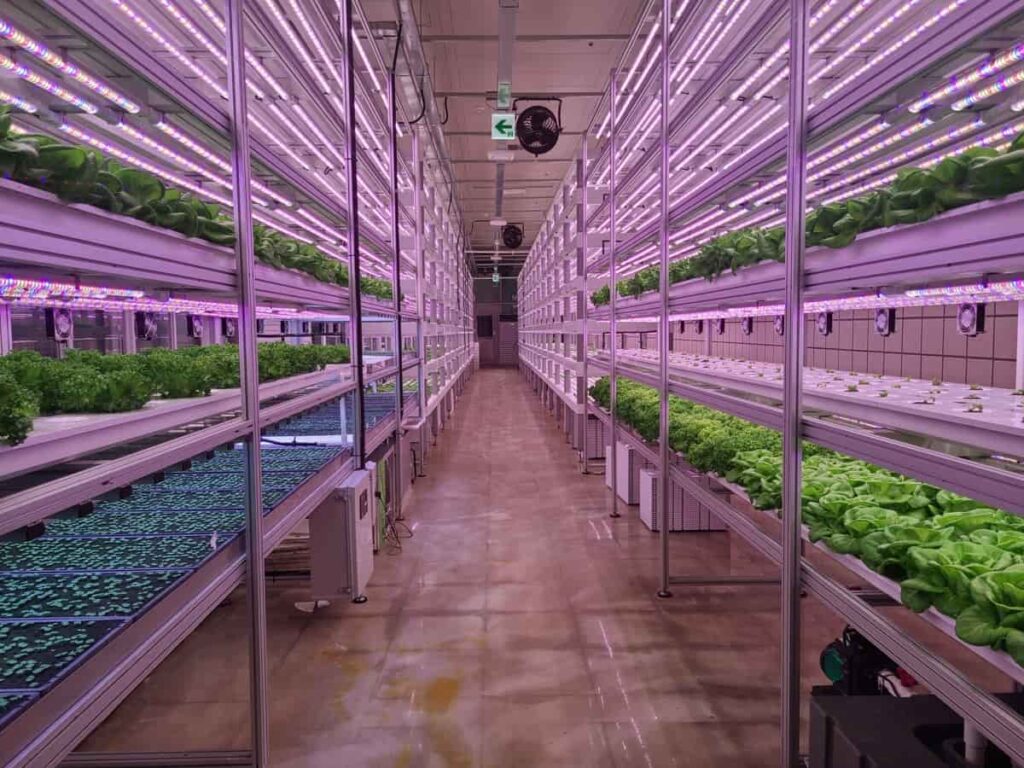
How to Make Terrace Raised Beds
If you’re seeking a practical and elegant solution to create a terrace vegetable garden, Build a raised bed in containers, raised beds to allow you to produce more vegetables. Plants will grow with less maintenance, and they are also inexpensive. The raised beds on the rooftop are essentially the same as those seen in a typical garden.
Specialized raised beds for patios may be found in well-stocked garden centers or even online shops, all you have to do is customize which one is best for you, or you can create your own, which is quite simple. Just ensure the terrace underneath it is adequately waterproofed before installing it. If you fill the raised bed with soil, consider how you’ll keep voles and insects out. Mix decent garden soil, ripe compost, and manure to make soil.
Container Gardening
Vegetable container gardening, like decorative container gardening, gives you more control over your food plants’ ground, light, and growing conditions. It also helps to grow vegetables in even tiny areas. Containers may be placed on your terrace, balcony, front stairs, and along the foundation and entrance of your home. In a container, almost any fruits, vegetables, or herb can be grown if the container is big enough to fit the plant’s mature growth. Small pots or hanging baskets can cultivate herbs and leafy greens.
In case you missed it: How to Start Home Gardening in Asia: For Indoors, Outdoors, Raised Beds, Backyards, Terrace, Pots, and In Containers for Beginners
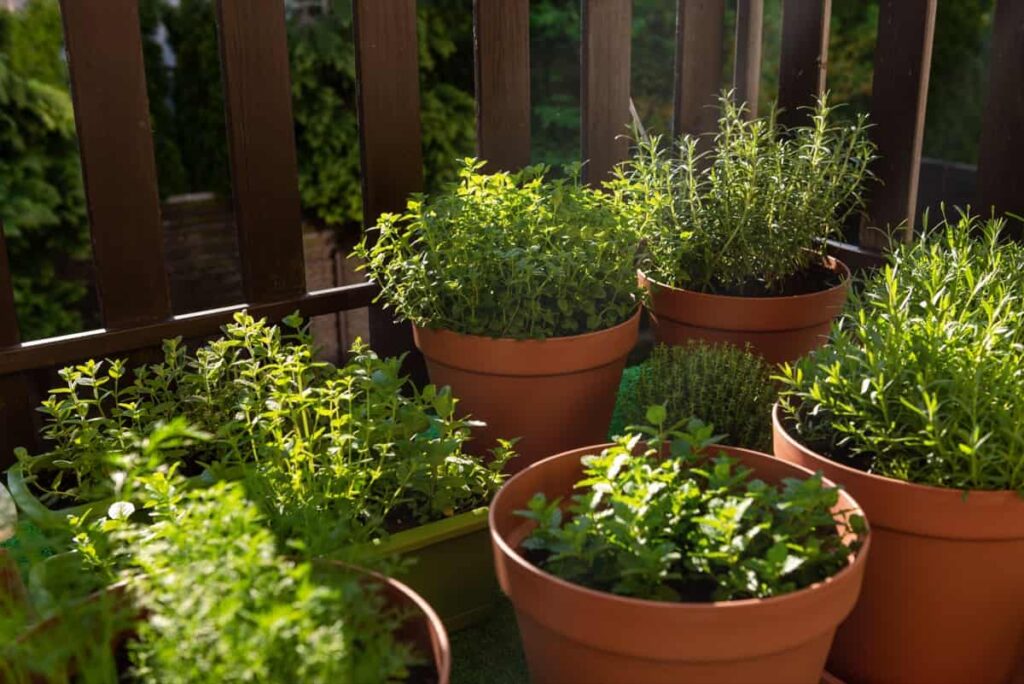
Fruiting plants like tomatoes, peppers, eggplants, and cucumbers grow in 5-gallon containers—or bigger. The deeper the container, the more soil it holds and the less frequently you’ll need to water it. Containers of clay and terra cotta lose moisture more quickly, whereas black containers retain heat better. Containers of clay and terra cotta lose moisture more quickly, whereas black containers retain heat better. For the ultimate no-fuss garden, you may purchase soil precisely suited for vegetable container growing with gentle fertilizer already mixed in.
Layouts for a Small Space Vegetable Garden
Don’t be scared to try new things; it’s your place, and you can decorate it however you want. Consider growing flowers, adding ornamental objects, and buying more aromatic herbs and vegetables to improve the entire look and feel of the space.
Conclusion
Now you have all the information you need for vegetable gardening. We believe you’re more confident about planting your organic vegetable garden in your home. Vegetable gardens don’t require a lot of space. You need quality soil with enough sunlight, water access, and a fence. Keep a safe distance from your trees and shrubs if the rabbits enjoy them. The entire forest ecosystem will admire your vegetable garden. They’ll show up if you plant it.
- Budget Friendly Sheep Shed Ideas: Cheap and Low-Cost Tips
- How Much Do Cattle Farmers Make: Revenue Streams in Cattle Farming
- Management Pests and Diseases in Your Cotton Field
- Sheep Farming Business Plan for Beginners
- Aquaponic Farming at Home: A Step-By-Step Guide
- Profitable Village Farming Business Ideas in 2024
- High-Yield Aquaculture: Fast-Growing Fish for Farming
- Effective Fish Pond Construction Techniques for Beginners
- Irrigation and Water Management in Pineapple Farming
- Blossom to Harvest: Mastering Flowering and Pollination in Papaya Farming
- Pig Fattening Essentials: From Selection to Sale for Beginners
- Raising Wagyu Cattle: A Complete Guide for Premium Beef Production
- Soil Types and Their Water Holding Capacity
- Optimizing Irrigation Schedules for Coconut Groves for Enhanced Yield
- Espresso Your Garden: Coffee Grounds for Healthier Acid-Loving Plants
- The Best Soil Mix for Snake Plants: How to Mix Your Own Snake Plant Soil
- Green Thumb Success: Expert Tips for Cultivating Greenhouse Beans All Year Round
- Bloom All Year Round: The Ultimate Guide to Indoor Hyacinth Care
- Eco-Friendly Gardening: How to Make Liquid Fertilizer from Kitchen Waste
- Ultimate Guide to Grow Anise in Pots: Explore Seed Propagation to Harvesting
- Guide to Raising Chester White Pigs: Discover Breed Facts to Growth Management
- Mastering the Elegance: The Ultimate Guide to Weeping Cherry Tree Care, Planting, and Maintenance
- Ultimate Guide to Planting Garlic in Grow Bags: Growing Strategies for Beginners
- How to Fix Spider Plant Leaf-Related Problems: Natural and Organic Remedies
- 10 Reasons Why Your Tulsi Plant is Shedding Leaves: Home Remedies and Solutions
- Optimizing Growth and Yield: The Advantages of Palm Bunch Ash Fertilizer
- Utilizing Neem Oil Extract as a Natural Pesticide for Hydrangea
- From Soil to Harvest: Various Ways in Which Farmers Can Use AI Tools
- Steps to Encourage and Induce Citrus Flowers: A Comprehensive Guide
- How to Fix Snake Plant Leaf-Related Issues: Natural and Organic Remedies
- Transform Your Garden into a Fragrant Oasis with Raat Ki Rani (Night Blooming Jasmine)
- Discover the Ideal Chicken Breeds for Philippine Farms
- How to Create a Poultry Egg Farm Business Plan for Profits
- Grow Lemon Cucumbers Like a Pro: Insider Techniques for Bountiful Yields
- Ultimate Guide to Caring for Your Pink Princess Philodendron: Tips for Thriving Variegation
- Areca Nut Profit Per Acre: Calculating Yield and Cost of Cultivation
